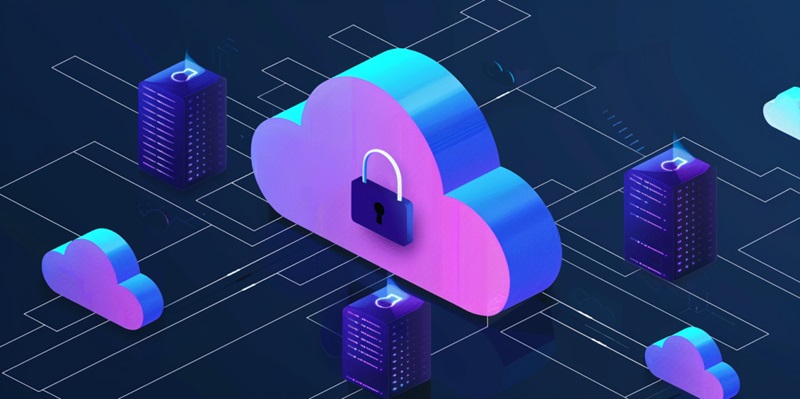As businesses increasingly transition to cloud computing, Chief Information Security Officers (CISOs) find themselves navigating a rapidly evolving cybersecurity landscape. A surge in cloud security spending is anticipated, with a Gartner report forecasting a robust 24% increase, highlighting the urgency with which CISOs must adapt their strategies to counteract the nuanced threats. This movement is not only driving a revolution in IT practices but also emphasizing the significant challenges that cloud computing brings, including traditional IT security issues refashioned within the cloud context.
Understanding the Cloud’s Security Landscape
The shift to cloud computing has introduced a new dimension to organizational operations, but it has also cast light on a suite of complex security challenges. CISOs are now grappling with intricate governance issues, frequent system misconfigurations, and an array of vulnerabilities that not only affect their internal infrastructure but also extend throughout their supply chains. The nature of cloud services—dynamic, expansive, and ever-changing—means that security must evolve in tandem. CISOs are tasked with overcoming these persistent issues while also navigating the distinct landscape that cloud computing unveils, requiring a keen understanding of both antiquated and novel security concerns.
With the expansive territory of the cloud, CISOs face the daunting task of ensuring security across all fronts. Each new service, user, or application added to the cloud infrastructure represents a potential vector for attack, making rigorous governance and the management of configurations and identities a constant battle. The unique challenge lies not only in safeguarding data and systems but also in maintaining visibility and control within an environment that is inherently designed to be fluid and scalable.
Navigating Shared Responsibility in Cloud Security
The concept of shared responsibility in cloud security is pivotal, yet it remains a source of confusion for many CISOs. This model, as defined by cloud heavyweights like Amazon Web Services and Microsoft Azure, outlines the division of security tasks between providers and clients. Clarity is often obscured as CISOs wrestle with the reality that despite the resources offered by providers, the lion’s share of the security management burden rests on their shoulders. Effective risk mitigation requires a sound understanding of where provider responsibilities end and where those of the organization begin.
While cloud service providers furnish a robust set of tools and controls to assist with security, CISOs must realize that the implementation and maintenance of these measures fall within their purview. This necessitates a proactive approach to preventing, detecting, and responding to security threats. As cloud environments grow in complexity, the CISO’s role becomes even more critical in establishing and enforcing the security posture needed to protect organizational assets.
Integrating Security and Cloud Strategy
Far too often, security needs and business objectives fall out of sync, particularly when CISOs are not involved in initial cloud strategy discussions. This exclusion can lead to viewing security as an additive rather than a foundational component of cloud strategy. The siloing of security considerations creates vulnerabilities and inefficiencies, which points to the need for a shift in perspective. Integrating security into platform engineering and DevOps from the outset can circumvent these issues, preventing security from becoming a bottleneck or an afterthought in the development process.
Adopting a security-first mentality is paramount as organizations move into the cloud. This paradigm change signifies the importance of baking security into every layer of cloud infrastructure, thereby ensuring that security measures keep pace with rapid development cycles and technology deployments. By aligning the CISO’s expertise with cloud strategy from the beginning, organizations can foster a more resilient and secure operational environment.
Leveraging Automation and Governance Frameworks
To keep up with the complexity of cloud environments, CISOs must harness the power of automation. Automated tools are essential for governing cloud security effectively, allowing for efficient prioritization of alerts and responses to potential threats. Moreover, robust governance frameworks provide a structural backbone to security policies, which are especially crucial in fast-paced cloud settings.
Building toward an immutable cloud architecture, where components are less susceptible to changes and tampering, can significantly enhance security. Such stability reduces the risk of configuration drift and human error, two common culprits in security breaches. Automation, coupled with strong governance practices, empowers organizations to maintain consistency and reliability in their cloud security measures, providing CISOs with more confident control over their digital assets.
Empowering Security Teams through Continuous Training
Despite advances in cloud technology, human error remains a leading cause of security breaches. Continuous training and upskilling of security teams are essential in minimizing this risk. As cloud architectures become more intricate, the demands on the security workforce grow. Investing in their education ensures that they stay ahead of the curve, capable of identifying and addressing the sophisticated threats that the cloud ecosystem presents.
Regular training can mitigate the incidences of configuration mistakes and user errors that often lead to security lapses. By empowering their teams with knowledge and the latest skill sets, CISOs ensure a robust frontline defense against emerging threats. Fortifying the human element of cloud security is just as vital as implementing state-of-the-art technical safeguards.
Embracing a Proactive Security Posture
As the digital world pivots emphatically toward cloud-based solutions, Chief Information Security Officers (CISOs) face a shifting battleground in cybersecurity. An increase in cloud security investments is on the horizon, with a Gartner report predicting a significant 24% rise. This underscores the immediacy required of CISOs in revamping their defensive tactics to tackle the emerging, complex dangers. Cloud adoption is catalyzing a transformation in IT methods while also magnifying certain challenges. Within the domains of the cloud, familiar IT security concerns assume new forms, necessitating a strategic re-evaluation. This trend doesn’t simply reflect a change in the technological framework; it signifies a broader shift in the approach to organizational security, pressing CISOs to stay agile in an ever-changing cyber environment.

